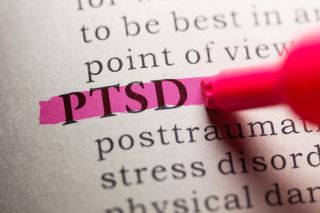Trauma
Why Not All Trauma Leads to PTSD
PTSD always involves trauma, but trauma doesn't always involve PTSD.
Posted January 24, 2023 Reviewed by Gary Drevitch

Consider this equation: PTSD always equals trauma, but trauma does not always equal PTSD. Many trauma survivors do not qualify for a diagnosis of PTSD, yet they have experienced trauma.
One of the biggest mistakes people make when defining the concept of psychological trauma is equating it to Post-traumatic Stress Disorder (PTSD). In fact, many people use the terms trauma and PTSD interchangeably. But PTSD is not a definition of trauma, nor is it a reliable or accurate way to determine if one has experienced trauma. PTSD is a psychiatric disorder assigned to trauma survivors who meet specific criteria outlined by the Diagnostic and Statistical Manual of Mental Disorders, Fifth Edition Text Revision (DSM-5-TR).
Which of these people has experienced trauma?
Consider two former clients of mine, Ayanna and Charles. Ayanna was in a car accident in which her car rolled down a hill and into a frozen lake. She was in the water for 20 minutes but managed to escape. She suffered multiple broken bones and hypothermia. Charles was in a fender-bender in which his car was hit from behind while parked at a red light. He and the other driver suffered no injuries, and the vehicle damage was minimal.
So, who is more likely to experience psychological trauma, Ayanna or Charles? It appears that it would be Ayanna. Yet, the client who experienced psychological trauma due to his accident was Charles. How is this possible? It's because an event does not define trauma.
A criterion for a diagnosis of PTSD is “exposure to actual or threatened death, serious injury, or sexual violence.”Who determines if an event meets this criterion? Ayanna’s car accident may have appeared life-threatening, but that is not how she experienced it. She stated, “I know this sounds crazy, but I never thought I could die. It was a challenge. How fast can I get out of this seat belt, climb out of my sunroof, and swim to safety? I wanted to be timed like in one of those ninja reality shows on TV. I felt powerful.” In contrast, Charles reported, “I was terrified. Everything slowed down, and my body went completely numb. I didn’t remember a lot after that.” Six months later, Ayanna reported having no cognitive, emotional, or physical impacts related to the accident, while Charles reported experiencing many severe symptoms.
Did Charles qualify for a diagnosis of PTSD? Yes, but not everyone agreed. By the time I met Charles, he had been assessed by a therapist, a psychiatrist, a psychologist, and a social worker within eight months. He received a diagnosis of Generalized Anxiety Disorder from his therapist; Panic Disorder from his psychiatrist; Adjustment Disorder from his social worker; and PTSD from the psychologist who conducted 8 hours of psychological testing. I can’t help but wonder if Charles’ therapist, psychiatrist, and social worker viewed his accident as an event that did not expose him to actual or threatened death or serious injury despite the fact that he reported symptoms such as nightmares, insomnia, a startle response, hypervigilance, panic attacks when walking near traffic, avoidance of driving and being a passenger in cars, dissociation, negative beliefs about driving and his ability as a driver, an inability to remember details about the accident, unexplained back pain, and consistently blaming himself even though he was struck while parked at a red light. It was two years before Charles received a recommendation to engage in trauma therapy.
Complex PTSD and Developmental Trauma
PTSD is not an accurate definition of trauma because the DSM is slow to catch up with researchers and practicing clinicians. The American Psychiatric Association revises the guide every five to seven years when they delete, add, or update diagnoses based on new research. Even after this waiting period, not all research is integrated or considered. The last DSM revision occurred in March 2022, and a few critical diagnoses were missing, such as Complex PTSD (CPTSD) and Developmental Trauma Disorder (DTD), the children’s version of CPTSD. These disorders account for multiple events, "little-t" traumas, and an accumulation of experiences that often occur in weeks, months, and years, usually during crucial stages of development.
Survivors of childhood developmental trauma often do not qualify for the diagnosis of PTSD, but they have experienced trauma and may benefit from trauma treatment. Ayanna came to therapy after experiencing years of emotional neglect perpetrated by her mother, which strongly hindered her ability to feel safe and secure in her adult relationships. She did not meet the criteria for PTSD but might have met the criteria for a diagnosis of Complex PTSD — if this diagnosis officially existed. Regardless, Ayanna is a trauma survivor like Charles, and she benefited from trauma therapy.
The DSM is not a sterile diagnosis tool that exists in a vacuum. Cultural shifts and politics impact which diagnoses are included, revised, or deleted. It may be wise not to rely on it exclusively to determine if one has experienced trauma. Remember the equation: A diagnosis of PTSD always equals trauma, but trauma does not always equal PTSD.
References
Diagnostic and Statistical Manual of Mental Disorders: DSM-5-TR. Washington, DC: American Psychiatric Association Publishing, 2022.


